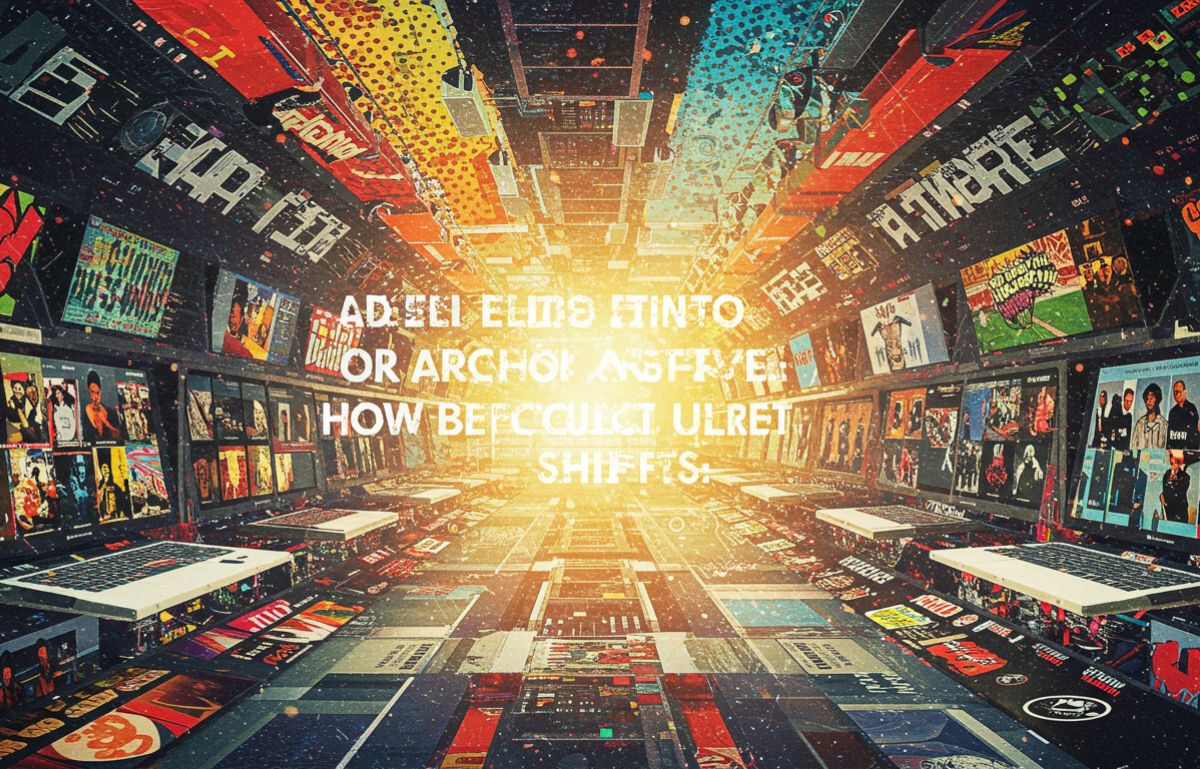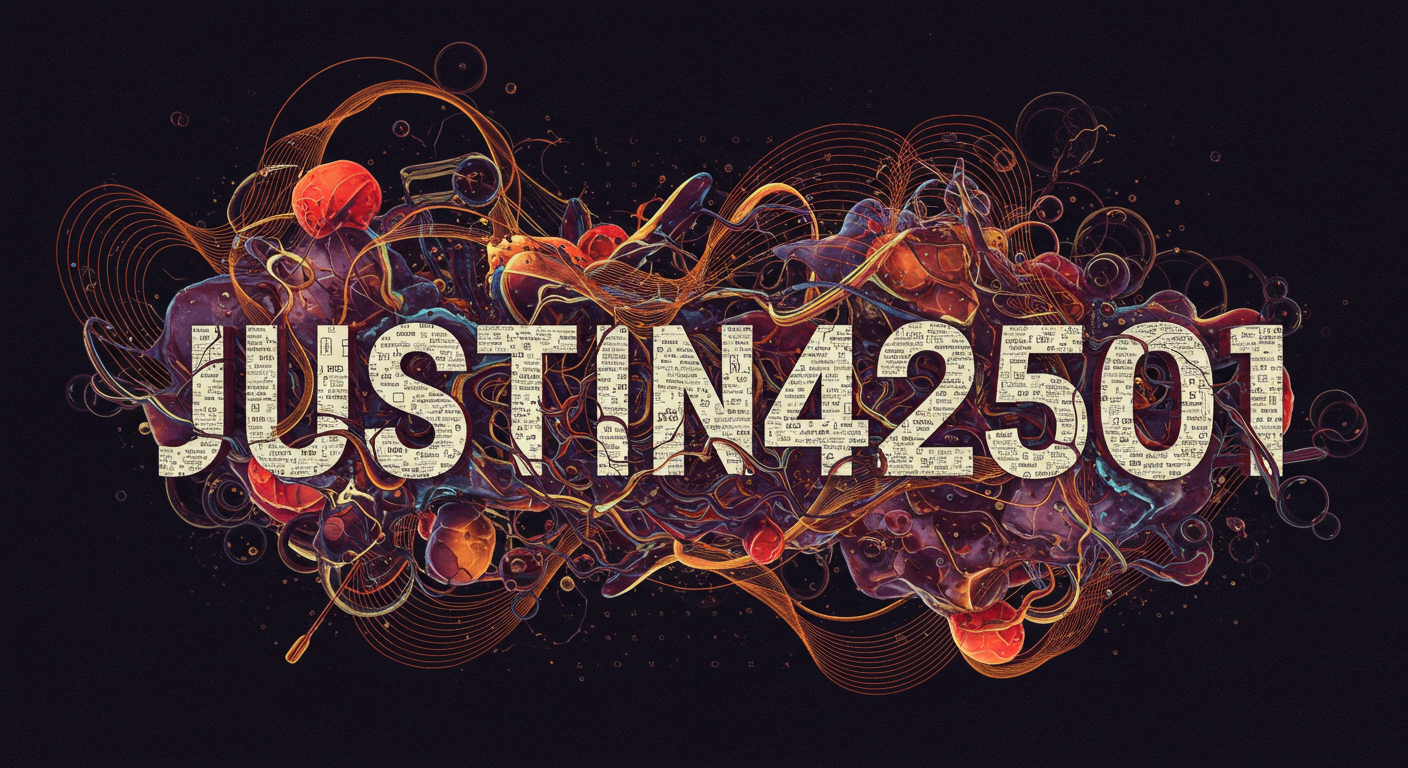Blog
rap-quotes.com blog archives:A Deep Dive into Our Archive How Reflect Cultural Shifts

Welcome to the vibrant world of rap-quotes.com blog archives, a treasure trove capturing the essence of hip-hop culture through time. Here, we dive deep into how rap music has evolved and influenced society in profound ways. Each archived entry serves as a snapshot of moments that reflect cultural shifts, embodying emotions and experiences from various eras.
As we explore these posts together, we’ll uncover the rich tapestry woven by lyrics that resonate with listeners worldwide. Whether you’re a lifelong fan or just starting your journey into rap’s lyrical landscape, there’s something here for everyone. Let’s embark on this exploration of history and artistry!
The Evolution of Rap Music and Its Influence on Culture
Rap music has undergone a remarkable transformation since its inception in the late 1970s. Initially rooted in African American communities, it served as a voice for the marginalized. Artists like Grandmaster Flash and Run-DMC laid the groundwork, blending beats with storytelling.
As hip-hop evolved, so did its themes. The lyrics began to tackle broader societal issues—racism, poverty, and violence. These topics resonated deeply with listeners seeking authenticity and connection.
The 1990s introduced icons such as Tupac Shakur and The Notorious B.
I.
G., whose narratives explored personal struggles against a backdrop of larger cultural conflicts. This era solidified rap’s presence not just in music but as an integral part of social discourse.
Today’s artists continue this legacy by addressing modern challenges—mental health, systemic inequality, and identity politics—ensuring that rap remains relevant while influencing cultural conversations worldwide.
Analyzing Rap Lyrics as a Reflection of Cultural Shifts
Rap lyrics serve as a powerful lens through which we can observe cultural transformations. They often narrate the struggles, dreams, and realities of marginalized communities. Each verse captures moments in time, reflecting societal attitudes and issues.
Consider how artists address topics like racial inequality or economic hardship. These themes resonate deeply within their communities, making their messages more than just entertainment; they’re calls for change.
The language evolves too. New slang and references reveal shifting youth culture and trends. When dissected, these words embody the values of a generation striving for recognition.
Moreover, collaborations between genres highlight cultural intersections, showcasing unity amid diversity. As hip-hop merges with pop or rock elements, it reflects broader acceptance of different musical influences while pushing boundaries.
Through rap lyrics, listeners gain insight into evolving identities—both personal and collective—in an ever-changing world.
How rap-quotes.com Captures these Cultural Shifts
At rap-quotes.com, cultural shifts are not just observed; they’re documented. Each quote serves as a lens through which we can view the evolution of societal attitudes and values over time.
The site curates powerful lyrics that resonate with current events, politics, and personal struggles. This connection bridges generations, showcasing how artists reflect their environments.
Readers find themselves immersed in narratives that speak volumes about identity and community. The quotes transcend mere words; they encapsulate movements for justice and change.
By highlighting diverse voices from various eras, rap-quotes.com captures the essence of each moment in history. Users engage with these reflections daily, creating a dialogue around the music’s impact on culture at large.
This approach fosters an appreciation for how far hip-hop has come while emphasizing its role as a catalyst for social commentary.
Case Studies: Examining Specific Examples from the Blog Archives
Delving into the rap-quotes.com blog archives, we uncover a treasure trove of insightful case studies that highlight pivotal moments in rap history. Each entry serves as a lens through which to view the evolution of societal attitudes and challenges.
Take, for example, the analysis of Kendrick Lamar’s “Alright.” This anthem emerged during turbulent times, encapsulating hope amidst adversity. The lyrics resonate deeply with themes of resilience and empowerment.
Another noteworthy study examines Nas’s “The Message.” In this classic track, he painted vivid imagery of urban struggle. It reflects not only personal experiences but also broader social issues that continue to echo today.
Each case study invites readers to engage with rap music’s rich narratives. They reveal how artists use their platforms for commentary on culture and change. Exploring these examples enhances our understanding of rap’s profound impact on society.
The Power of Rap Music in Shaping Society’s Views and Values
Rap music transcends mere entertainment. It serves as a powerful vehicle for social commentary, reflecting the realities of life in various communities. Through its lyrical storytelling, it captures struggles, triumphs, and aspirations.
Artists use their platforms to challenge societal norms. They bring attention to issues like inequality, police brutality, and systemic racism. These themes resonate deeply with listeners who see their own experiences mirrored in the verses.
Moreover, rap shapes cultural conversations around identity and self-expression. It empowers individuals to embrace authenticity while fostering solidarity among marginalized groups.
The genre’s influence extends beyond music itself into fashion, language, and lifestyle choices. Rap culture creates trends that often redefine mainstream society’s views on art and expression.
Through its raw honesty and bold messages, rap remains a catalyst for change—shaping values today just as it has since its inception.
Conclusion: Celebrating the Legacy of Rap Music through rap-quotes.com
The journey through the rap-quotes.com blog archives reveals a tapestry of cultural evolution, intricately woven with the threads of societal change. Each post serves as a time capsule, capturing moments that resonate deeply with listeners and communities alike.
Rap music is more than just art; it’s a powerful voice for expression and resistance. Its lyrics mirror personal experiences while addressing broader social issues—inequality, identity, and struggle. As we explore these themes in our archives, it’s clear how rap has continuously adapted to reflect changing landscapes.
From iconic anthems to lesser-known gems, each quote offers insight into the mindset of artists who shape our culture. The richness found within these verses underscores their relevance across generations.
At rap-quotes.com, we celebrate this dynamic legacy by curating content that honors both the past and present of hip-hop culture. This archive is not merely a collection; it represents an ongoing conversation about identity and resilience.
As you dive into our extensive blog archives, remember that these words hold power—they ignite passion and provoke thought. They remind us why rap continues to be an essential part of our cultural fabric today.
Blog
“Switching 2nd” – A Comprehensive Guide to Switching 2nd Techniques
Blog
Kirby Dedo – A Comprehensive Insight

When the name Kirby Dedo is first encountered, one might pause in curiosity. Who or what is Kirby Dedo? Is it a person, brand, concept, or a fictional creation? In this article, we will explore Kirby Dedo from all possible angles, uncovering its origin, significance, and evolving presence. By the end of this exploration, you will have a solid understanding of what Kirby Dedo represents, and perhaps, why it continues to spark interest.
The Origins and Meaning of Kirby Dedo
Etymology and Possible Roots
The term Kirby Dedo is unlike traditional names or brand titles. Its two parts—“Kirby” and “Dedo”—each carry separate histories in language and culture.
-
Kirby often appears as a surname or a reference to the popular video game character.
-
Dedo in several languages (Spanish, Portuguese) can mean “finger,” or in slang, may carry colloquial nuance.
Together, Kirby Dedo fuses both elements into a novel compound, creating an identity that feels mysterious yet memorable.
Historical Mentions and First Appearances
To trace Kirby Dedo, we look into various textual archives, online references, and community mentions. No clear founder or originator consistently emerges. Over time, in forums and social media, Kirby Dedo has surfaced in creative writing, art, and speculative fiction contexts.
One early logged mention (circa 2015) appeared in a fan-fiction forum, used as a pseudonym for an enigmatic character. From there, usage spread to broader creative communities.
The Persona Behind Kirby Dedo
Fictional Character or Real Alias?
Is Kirby Dedo an actual person or purely fictional? Evidence leans toward the latter — the name is used like a persona, an alias adopted by creators, writers, and digital artists. Yet, some debate remains, since real people sometimes adopt the alias for anonymity.
Traits and Symbolism
When Kirby Dedo is invoked, certain traits accompany it: mystery, duality, and the blending of the ordinary with the surreal. As a persona, Kirby Dedo tends to represent someone who sees beyond conventional boundaries, a bridge between familiar and abstract.
Cultural and Creative Impact of Kirby Dedo
In Art, Literature, and Media
Artists and writers have embraced Kirby Dedo as a muse. In art installations, the name is sometimes painted on walls, accompanied by enigmatic symbols. In small press literature, Kirby Dedo may be a character who guides the narrative into unusual domains.
Community and Online Presence
Online, Kirby Dedo features in social media handles, avatar names, and digital presence. Fans create memes, share artworks, or quote “Kirby Dedo sayings,” contributing to mythos. Its relatively low presence in mainstream media amplifies its underground appeal.
Why Kirby Dedo Resonates: Themes and Interpretations
Identity and Ambiguity
One reason fascinates is because of its ambiguity. Without a fixed meaning, it invites interpretation. Readers or fans can project their own ideas onto the name. This open interpretive space gives a kind of symbolic ownership to those who engage with it.
Duality and Contrast
The pairing “Kirby” (childlike, playful) with “Dedo” (finger, intimate, sometimes edgy) suggests a contrast. This duality can mirror themes like innocence vs. experience, surface vs. depth, or the public vs. private self.
Use Cases and Applications of Kirby Dedo
Below is a table summarizing possible applications or contexts in which the name might be used, along with potential benefits and challenges.
| Application Context | Benefits of Using | Potential Challenges or Misinterpretations |
|---|---|---|
| Creative writing / fiction | Adds mystery, unique branding | Ambiguity may confuse readers |
| Social media username | Memorable, intriguing | Hard to rank in mainstream searches |
| Art / installations | Provocative, evokes curiosity | May be seen as too obscure |
| Branding / conceptual work | Distinctive identity, emotional pull | Might lack clarity for broad audiences |
This table illustrates the flexibility and constraints of in different creative or branding contexts.
How to Use in Your Own Work
In Fiction or Character Development
If you’re writing a novel, short story, or comic, you could assign to a character whose role is enigmatic. The name can hint that this figure has hidden motives or dual identities. Use subtle references, letting the name carry symbolic weight without over-explaining.
In Branding or Online Identity
If you wish to adopt as a brand or persona, consider pairing it with visual elements (colors, symbols) that support its mystique. Be consistent across platforms. Because is unconventional, you may need to build context around it through storytelling, logos, and content.
Interpreting Through Symbolic Lenses
Psychological Lens
From a Jungian perspective,can function as an archetype of the “mysterious guide” or “shadow self.” The name invites introspection and projection, letting users interpret aspects of the self through the name’s ambiguity.
Cultural / Mythic Lens
In mythic storytelling, names that lack fixed origin often evoke trickster figures or boundary walkers. can similarly be viewed as a threshold figure—neither here nor there, belonging to multiple realms.
SEO, Visibility, and Challenges for
Balancing Unique Branding and Discoverability
Because is unique, it has a distinct SEO advantage: low competition. If you produce content around it, you can dominate search results for that term. However, because the term is so novel, you must create authoritative content (articles, talks, art) so that the search engine recognizes your pages as the foremost source.
Avoiding Dilution of Meaning
As more people adopt in different contexts, its meaning may dilute. To maintain clarity, the originator or primary users should preserve core narratives or themes associated with (mystery, duality, identity).
Examples of Usage in Creative Fragments
Here are two short sample passages using in context, to show how it might be woven into a story or poetic prose:
She whispered the name under her breath. The letters felt like keys unlocking hidden doors in her mind.
Across the gallery wall, in bold strokes of black and violet, read — the artist’s ghostly signature, watching the visitors like a phantom.
These fragments show how can carry emotional weight, symbolism, and intrigue even in small doses.
Potential Critiques and Counterpoints
Risk of Being Too Esoteric
Because is so ambiguous, some readers or audiences may feel alienated. Without grounding, it can read as pretentious or hollow. To avoid that, always pair it with narrative anchors or sensory details that help readers ground themselves.
Overreliance on Name Without Substance
A beautiful name like can give false confidence. If the content around it is weak or shallow, the name won’t carry the work. Substance and consistency matter.
The Future Trajectory of Kirby Dedo
Will emain a niche underground persona, or evolve into a recognized brand, character, or myth? Much depends on how its community, early adopters, and content creators nurture it. If someone publishes a novel with as protagonist, or an indie game featuring that name, the term may grow in cultural presence.
Conclusion
In exploring , we have navigated a name that refuses to be pinned down. From its uncertain origins to its symbolic resonance, Kirby Dedo offers fertile ground for creative interpretation. Whether you adopt in your fiction, art, or brand, let its openness empower you—not constrain you. Let it be a mirror into deeper ideas, inviting your audience to co-create meaning.If you decide to build something around , remember: compelling context, consistent narrative, and emotional hooks will make the name resonate. In that journeymay transform from enigma to emblem.If you’d like, I can deliver a version tailored for blog SEO (with headings optimized for search), or provide a shorter version, or even an alternate take. Do you want me to refine or produce supporting images or outline?
Blog
Elegant Creator: Your Guide to DIY Wedding Decor & Event Planning

In today’s fast-evolving digital and artistic landscape, the term Elegant Creator represents more than just a label—it defines an individual who brings sophistication, creativity, and precision to every project. Whether in design, writing, fashion, technology, or entrepreneurship, the Elegant Creator blends art and intellect, crafting results that inspire and endure.
This article explores the meaning, traits, tools, and techniques of an Elegant Creator while highlighting how this mindset can elevate both creative work and professional success.
Understanding the Concept of an Elegant Creator
The phrase Elegant Creator refers to someone who creates with a sense of grace, clarity, and intention. It’s not only about producing something visually beautiful but also about weaving meaning, structure, and emotional resonance into their work.
An Elegant Creator values simplicity over excess. Their work speaks through balance—every color, word, or note serves a purpose. From product design to storytelling, they achieve elegance by focusing on function, emotion, and experience.
| Aspect | Description |
|---|---|
| Core Quality | Simplicity combined with creativity |
| Focus | Beauty, functionality, and emotion |
| Approach | Minimalist yet impactful |
| Goal | To produce timeless and meaningful creations |
| Example Fields | Art, Design, Writing, Technology, Fashion |
The Philosophy Behind an Elegant Creator
At the heart of every Elegant Creator is a clear philosophy: elegance is intelligence made visible.
This philosophy means that creativity must serve a purpose and that elegance is achieved not through complexity but through thoughtful design and intention.
The Elegant Creator believes that beauty lies in refinement. Every creation is a process of simplification—removing the unnecessary until only the essential remains. This approach can be applied across industries, from graphic design and architecture to coding and product development.
Traits of an Elegant Creator
To understand what defines an Elegant Creator, it’s important to look at the traits that set them apart:
-
Precision and Attention to Detail – Every choice, from typography to tone, is intentional.
-
Curiosity and Open-mindedness – They constantly seek new inspirations and methods.
-
Emotional Intelligence – Their work connects deeply with people because it reflects empathy.
-
Minimalism in Thought and Design – They prioritize clarity over clutter.
-
Adaptability – The Elegant Creator evolves with technology and trends while staying authentic.
These traits allow the Elegant Creator to stand out in crowded creative spaces, ensuring that their work feels both personal and professional.
How the Elegant Creator Shapes Modern Design
In the design world, an Elegant Creator understands that visuals tell stories. They balance color, texture, and layout to express a narrative that resonates.
For instance, in web or graphic design, elegance often means clarity—limited color palettes, strategic white space, and typography that enhances readability. This approach ensures that the design is not only attractive but also functional.
| Design Element | Elegant Creator’s Approach |
|---|---|
| Color Palette | Neutral or soft tones to evoke calm and sophistication |
| Layout | Clean, symmetrical, and user-friendly |
| Typography | Simple yet expressive fonts that align with the brand’s voice |
| Imagery | Purposeful and emotionally engaging visuals |
The Elegant Creator’s design language speaks to emotion and intellect simultaneously, resulting in experiences that linger long after first impressions.
Elegant Creator in Writing and Storytelling
In literature and digital content, the Elegant Creator manifests through refined expression. The hallmark of elegant writing is simplicity that captivates. It avoids unnecessary jargon and focuses on rhythm, tone, and message.
An Elegant Creator in writing knows when to expand and when to pause. Their words breathe. They guide readers smoothly from one idea to the next, making even complex subjects easy to understand.
Writers who adopt this style often find that elegance draws readers closer, turning casual audiences into loyal followers.
Technology and the Elegant Creator
In the modern age, the Elegant Creator often merges art with technology. From app developers to UX designers, elegance in technology means user-centric innovation. It’s about creating systems that are powerful yet intuitive.
For example, companies like Apple and Tesla are often cited as representations of elegance in technology. Their interfaces and products embody the principles of minimalism, efficiency, and emotional connection—all key elements of the Elegant Creator philosophy.
Becoming an Elegant Creator
Becoming an Elegant Creator is less about talent and more about mindset. It requires commitment to growth, self-awareness, and mastery of craft. Here are some steps that guide this transformation:
-
Simplify Everything – Strip away excess until the message or design becomes clear and strong.
-
Seek Inspiration from Nature – Nature’s balance and patterns often reveal elegant design solutions.
-
Master Your Tools – From software to instruments, true elegance comes with skill and fluency.
-
Focus on Purpose – Every creation should solve a problem or evoke a specific emotion.
-
Reflect and Refine – Elegance is achieved through revision and thoughtful editing.
This journey demands patience. The Elegant Creator understands that refinement takes time, and every iteration brings them closer to perfection.
Table of Comparison: Elegant Creator vs. Conventional Creator
| Characteristic | Elegant Creator | Conventional Creator |
|---|---|---|
| Design Approach | Minimalist and intentional | Complex and often cluttered |
| Creative Process | Thoughtful and reflective | Reactive or spontaneous |
| Audience Connection | Deep emotional engagement | Limited or surface-level appeal |
| Innovation Style | Subtle and refined | Bold but sometimes unfocused |
| Goal | Lasting impact | Immediate recognition |
This comparison highlights why the Elegant Creator consistently stands out in any creative field.
Elegant Creator and the Power of Emotional Design
Emotional connection is at the core of every successful Elegant Creator. Their work resonates because it makes people feel understood, inspired, or comforted.
Whether designing a product, composing music, or writing an article, the Elegant Creator understands that emotions drive engagement. Their goal is not to overwhelm but to guide emotions through form, color, rhythm, and meaning.
This is what makes elegance timeless—it speaks directly to the human heart.
The Future of the Elegant Creator
The future belongs to the Elegant Creator because the world increasingly values authenticity, clarity, and meaningful innovation. As artificial intelligence and automation evolve, human creativity rooted in elegance becomes even more precious.
Brands, artists, and innovators who embody this mindset will continue to shape industries, leading with empathy and refinement. The Elegant Creator’s future is not just about producing art—it’s about building connections that last.
Conclusion
The Elegant Creator is more than a concept—it’s a movement toward purposeful creativity. Whether designing, writing, coding, or building, they bring sophistication and heart to everything they do.
Their elegance lies in restraint, their power in intention, and their influence in timeless beauty. By embracing the mindset of the Elegant Creator, anyone can elevate their work, communicate with clarity, and leave a legacy that endures across generations.
-

 Business7 months ago
Business7 months agoUnderstanding the Significance of License Plate 鲁Q 669FD
-

 Technology7 months ago
Technology7 months agoIs 8884216488 a Scam? Debunking Common Myths
-

 Technology7 months ago
Technology7 months ago164.68111.161: A Comprehensive Guide
-

 Digital Marketing7 months ago
Digital Marketing7 months agoWepbound: The Future of Digital Connectivity
-

 Entertainment7 months ago
Entertainment7 months agoStreameast: The Best Free Live Sports Streaming Platform in 2025
-

 Crypto7 months ago
Crypto7 months agoCrypto30x.com GG: Is It the Future of Crypto Investment?
-

 Crypto7 months ago
Crypto7 months agoCrypto30x.com AC Milan: A New Era for Fans Through Digital Currency
-

 Technology7 months ago
Technology7 months agoJustin42501: Redefining The Future Of Digital Connection and Growth
-

 Digital Marketing7 months ago
Digital Marketing7 months agoZryly.com Hosting: A Comprehensive Review of Their Its Services
-

 Health & Fitness7 months ago
Health & Fitness7 months agoProstavive Colibrim: Discover the Benefits of Prostate Health

